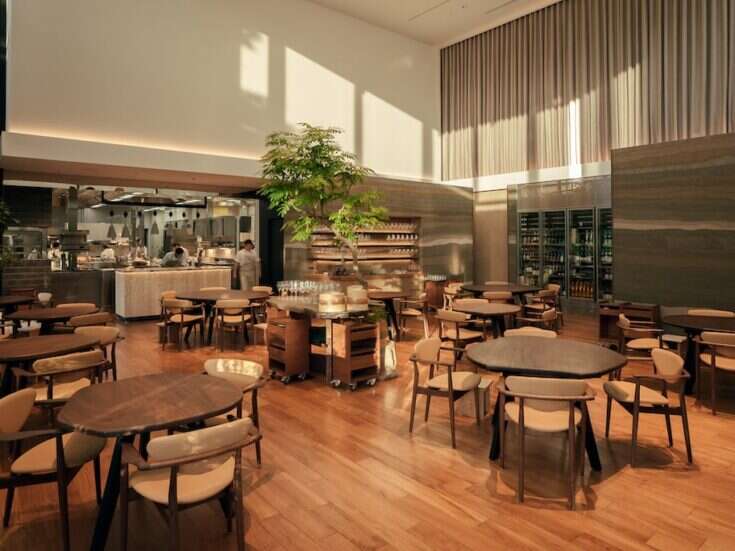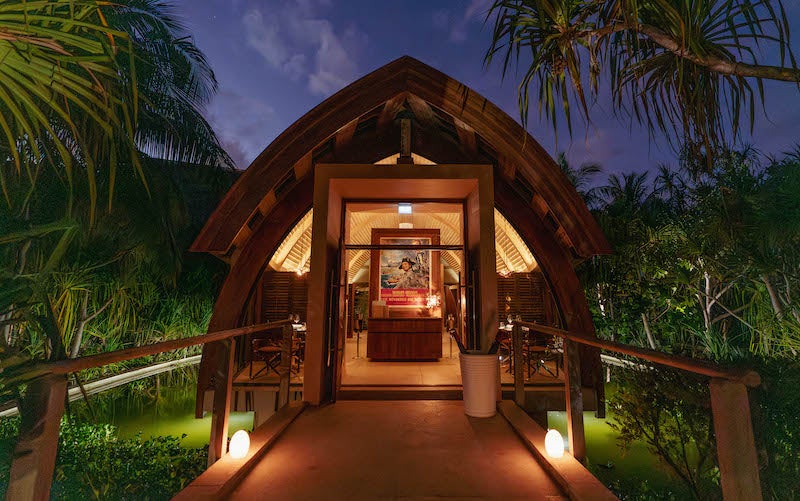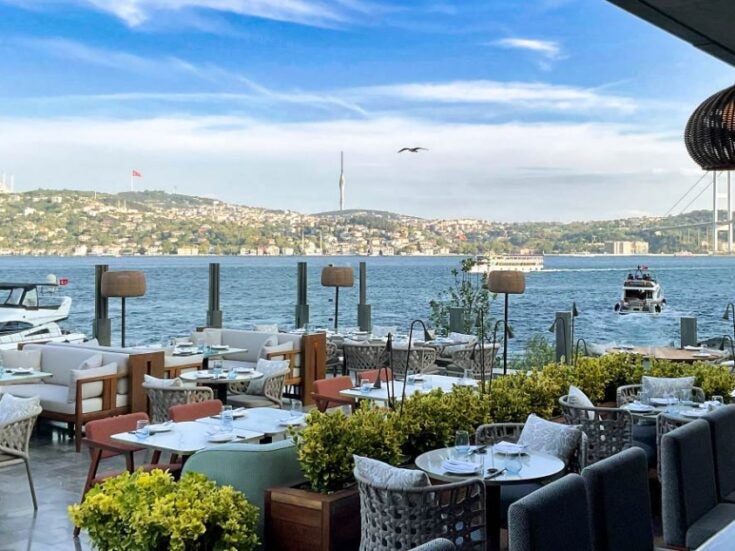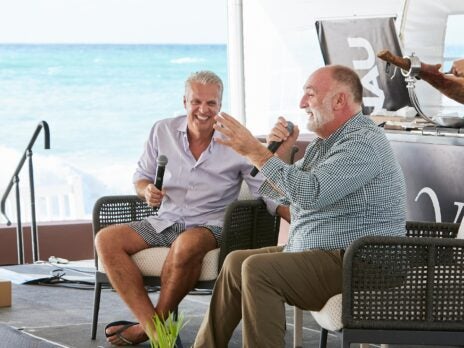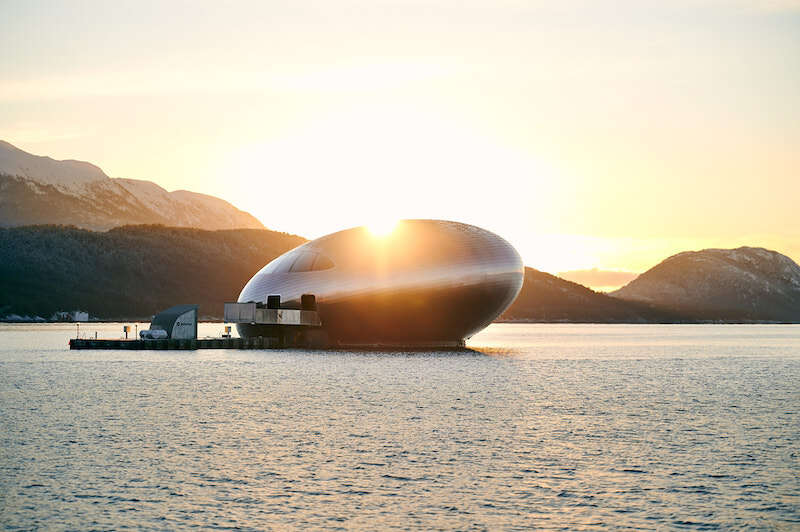
Fans (if we can call them that) of The Menu, look away now: our latest Restaurant of the Week is seemingly straight from the twisted brain of director Mark Mylod. Lovers of experiential, probably transformative dining experiences, on the other hand, listen up – the hottest restaurant in the world is floating in the middle of a lake in Norway. Lifejackets at the ready.
Self-billed as ‘Expedition Dining’, a visit to Iris commences with a boat trip from the lakeside town of Rosendal, cutting through the icy black waters of the Hardanger fjord (with a few pitstops along the way) to the restaurant.
The restaurant itself is inside Salmon Eye – an experience center dedicated to informing the world about more planet-friendly seafood production, designed by Kvorning Design. The floating installation (which is the largest of its kind in the world) was initiated by the family behind Eide Fjordbruk, the world’s first and only Carbon-neutral-certified salmon producer.
[See also: The Best Alternative Restaurant Guides to Michelin]
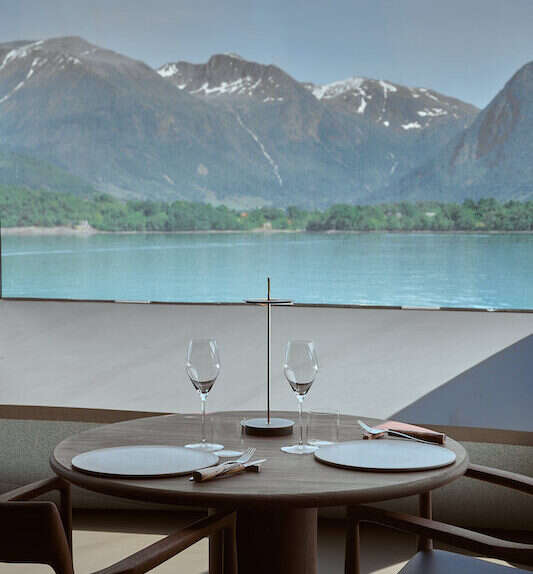
It follows then, that Iris’s culinary principles, led by head chef Anika Madsen, revolve around the same questions: What are the greatest threats to the global food system? What innovations can we use to protect and preserve the industry?
As is becoming more and more common in the restaurant world (and very fairly so), a dinner, ahem, experience, at Iris is not just about the plate in front of you, but the people, the places and the processes it took to put it there.
Chef
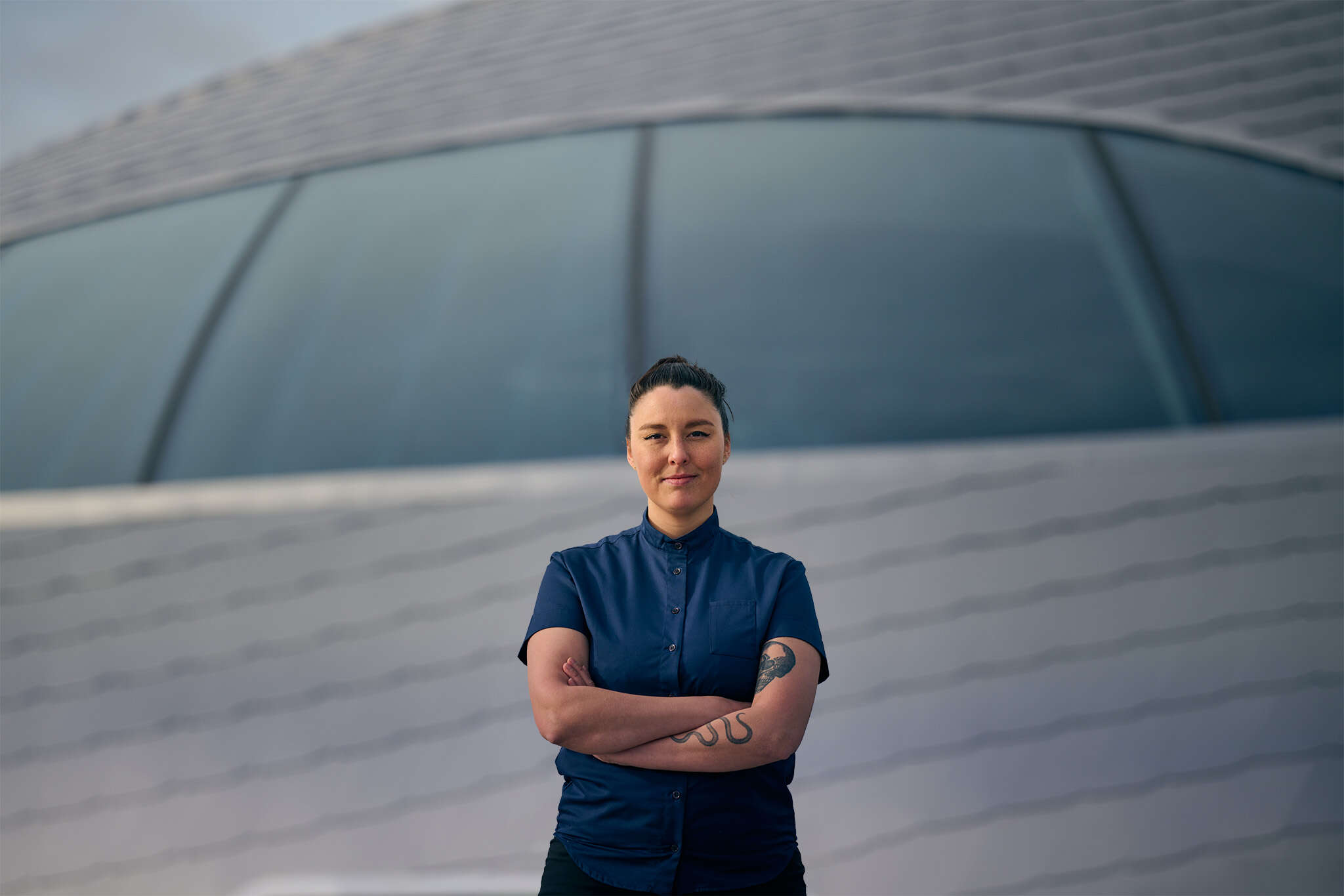
Iris’ Danish head chef Anika Madsen has been in the restaurant industry since the tender age of 17, working her way up through Copenhagen’s forward-thinking food scene on her journey to Iris. Her resume includes head chef positions at the likes of Roxie and Fasangården.
While her experience has carved her into the accomplished chef she is today, it has also exposed her to the ever-growing challenges the food industry faces, particularly in terms of sourcing, sustainability and quality.
Her role at Iris allows Madsen to not only highlight these challenges on a grand scale but also explore how to solve them. Her passion for finding local ingredients shines through in abundance.
[See also: The Best Restaurants in Copenhagen]
Menu
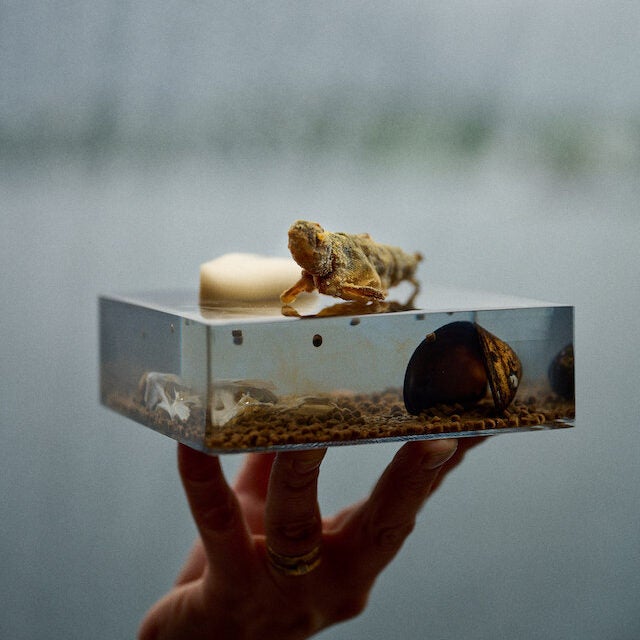
As you might expect, Iris does not serve a menu in the conventional sense. Instead, the food is presented as a story, a journey through the world’s food system and the challenges it faces. Each evening has just two timed ‘sittings’ (be late at your own peril) of 18 courses, with the clock starting the minute you leave the jetty at Rosendal.
The first stop, en route to the weird and wonderful Salmon Eye orb at the center of the lake, is at Madsen’s boathouse. Here, guests (of which there are just 24 a night) are served a welcome snack before embarking on the next stage of the journey – a multisensory underwater experience – on their way to the main dining room.
The food itself is rooted in seasonality and locality, with Madsen harnessing the very best of Norwegian produce and primarily focusing on seafood. Each dish examines a different element of the seafood supply infrastructure – for example, one is centered around feed sources of the future, and asks “If the feed gets nutritious and tasty enough, why don’t we just eat it ourselves?” effectively cutting out the middleman.
[See also: Whatley Manor: Sustainable Luxury Without the Compromise]
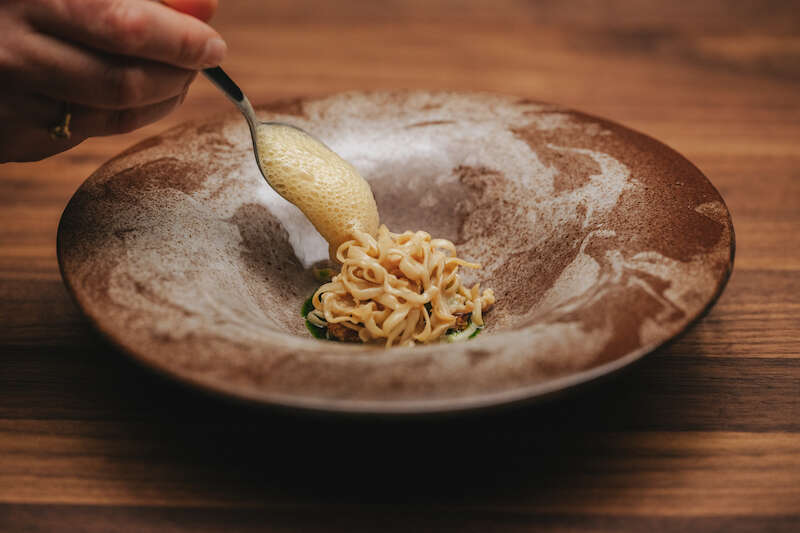
Another looks at hyper-local ingredients, challenging Iris’ kitchen team to create a dish using produce only from within 500m (1,640 ft) of the restaurant. The result is a delicate mix of juniper-smoked mussels, crab bouillon and rockweed.
And, despite the frivolities surrounding the menu, Madsen is dead set on the fact that each course has to be delicious – the concept might be out to challenge, but the dishes themselves are intended to delight.
[See also: Peter Hemsley’s Aphotic Champions Sustainable Seafood]
Interior
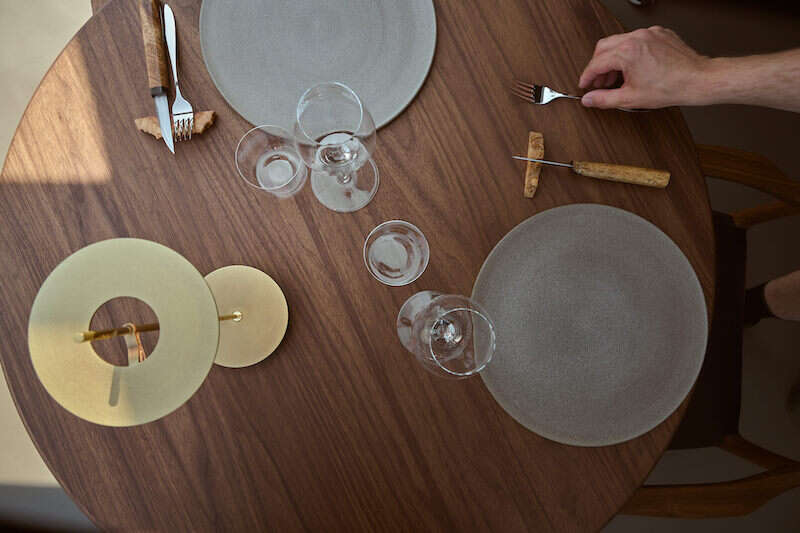
Showcasing the wonderful potential of modern design, Iris (and the wider Salmon Eye concept) is a visual marvel. At odds with the surrounding landscape thanks to its smooth, orb-like surface, yet adhering to the same cool, gray color palette of the water and the mountains, the structure rises out of the lake like an emerging submarine.
Found in the very center of the installation, Iris is every bit as stylish as you’d expect from a Scandi restaurant. Minimalism reigns supreme here, with huge, curved windows with views out to the mountainous landscape beyond acting as the star of the show.
Despite the caliber (and the cost) of the experience, the restaurant remains informal. Tables are linen-less, leaving the smooth, dark woodwork exposed in a cool yet sophisticated manner. Expect fellow diners to be unconventionally dressed too; Iris is firm about its lack of dress code and potential exposure to the elements, so don’t be surprised to see your neighbor dressed in a waterproof.
[See also: Michelin Star Chef Tom Aikens on Risk-taking and Regrets]
